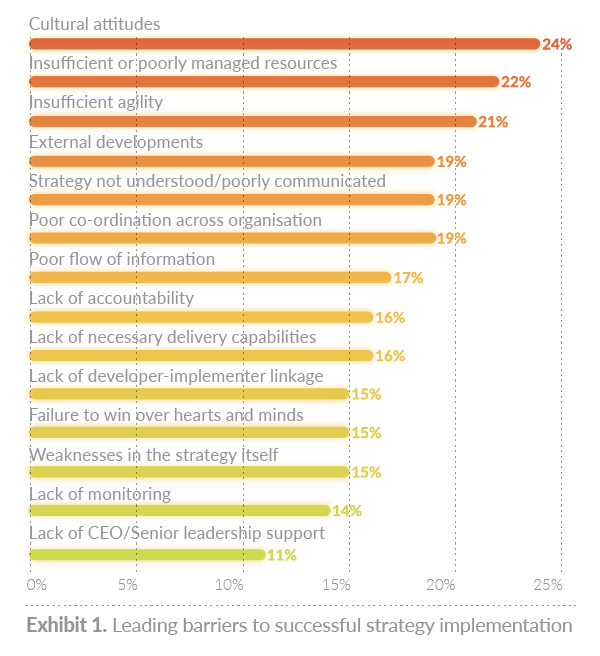The critical factor to help bridge the strategy-implementation gap is people: Ricardo Viana Vargas

Ricardo Viana Vargas is a specialist in project management and strategy implementation. Over the past 20 years, he has been responsible for more than 80 major transformation projects in several countries, covering an investment portfolio of over $20 Bn. He is currently the Executive Director of the Brightline Initiative™, a coalition of leading global organizations from business, government and not for profit sectors, dedicated to providing a knowledge and networking platform that delivers insights and solutions to successfully bridge the gap between strategy development and strategy implementation.
In this exclusive interaction with People Matters, Ricardo, shares some of the ways in which organizations can minimize the strategy-implementation gap and achieve their strategic goals.
How do external and internal factors impact the organization’s capability to implement strategies?
The rapid pace of changes in technology has necessitated organizations to be prepared to steer new markets, unexpected market changes, competitor moves, and new customer demands. We all hear of the advent of Machine Learning, Artificial Intelligence (AI), Blockchain, Quantum Computing, and Bioengineering. These changes, though disruptive, also offer organizations enormous possibilities to improve their products, services, and operations.
In today's era of hyper-consumption, it is not merely enough to be faster and efficient. Customers are demanding consciousness and sustainable solutions to their problems. Considering this awareness, organizations need to look at their strategy and implementation capabilities from a people-oriented lens.
What are some of the major factors which lead to a gap between what the organizations strategize and what they implement?
To understand why many organizations, fail to bridge the gap between strategy design and delivery, Brightline sponsored a research with Economist Intelligence Unit (EIU). We undertook a global multi-sector survey of 500 senior executives from companies with annual revenues of $1 Bn or more. The results show that among the main factor, organizations face challenges dealing with cultural attitudes, poorly managed resources and insufficient agility.
 As a result, many organizations fail to meet their strategic targets, as confirmed by a recent global survey conducted by Harvard Business Review- Analytic Services (HBR-AS), in association with the Brightline Initiative. We surveyed over 1,600 executives worldwide. The study found that only one-fifth of organizations achieve 80% or more of their strategic targets. The rest fail to translate their goals into reality.
As a result, many organizations fail to meet their strategic targets, as confirmed by a recent global survey conducted by Harvard Business Review- Analytic Services (HBR-AS), in association with the Brightline Initiative. We surveyed over 1,600 executives worldwide. The study found that only one-fifth of organizations achieve 80% or more of their strategic targets. The rest fail to translate their goals into reality.
What are some of the ways in which organizations can help bridge the strategy-implementation gap?
It doesn’t matter if you have the most brilliant strategy ever developed – if you fail to engage employees, the strategy will fail at the implementation stage. The critical factor to help bridge the strategy-implementation gap is People! Brightline's People Manifesto recognizes that people form the link between strategy design and delivery. People turn ideas into reality; they are the strategy in motion. Success requires a deep understanding of the fundamental complexity of this trickiest element.
“Leaders do acknowledge that people are their greatest asset, but often fail to lead a culture where everyone feels respected and moved by a shared interest to transform.”
What are some of the ways in which organizations can address and resolve their challenges to successfully achieve its strategic goals?
Brightline's latest study with HBR-AS found that the winning organizations can quickly adapt to new or unexpected market changes, competitor moves, and new customer demands. The secret of their success? These "implementation leaders" have found ways to overcome common organizational silos and foster more agile ways of working.
“Cross-functional teams decentralize decision making, regardless of their organizational structure. Only 16% of implementation leaders adopt centralized decision-making.”
Leaders need to build a culture of collaboration. Collaboration must be pursued and rewarded. Leaders who foster cross-functional teams to put strategic initiatives into action reap results of better strategy implementation. In our study, 78% of implementation leaders, versus merely 19% of laggards, said they encourage and reward collaboration.
Executives must be engaged with those around them, coaching just as much as leading. Forty-three percent of implementation leaders strongly agreed about the importance of senior executive engagement and coaching in their organizations, compared to just 19% for those considered to be followers and 13% for those characterized as laggards when it comes to strategic execution.
What are some of the ways in which organizations can empower their employees when it comes to implementing the chosen strategy?
In times of technological disruption, organizations need members of the C-suite to be actively engaged. They need to be constantly preparing their people, processes, and practices for a volatile and uncertain world.
Ultimately, a strategy is manifested through people and the organizational culture. While culture cannot be built directly, nor accomplished through a blueprint or a checklist, it cannot be left to chance.
“Leaders need to shape the culture of collaboration: besides building teams, individual efforts must be given space and encouraged. Leaders need to create an environment for teams to cross-collaborate and break down silos and truly empower their people.”
Leaders need a working strategy requires having the right individuals who can each do their own thing and, when needed, work well together. When the task requires it, teams can break down silos, add diversity to the creative process, and generate thinking and responsiveness far greater than the sum of the individuals.
Image credit: Microsoft MVP

















